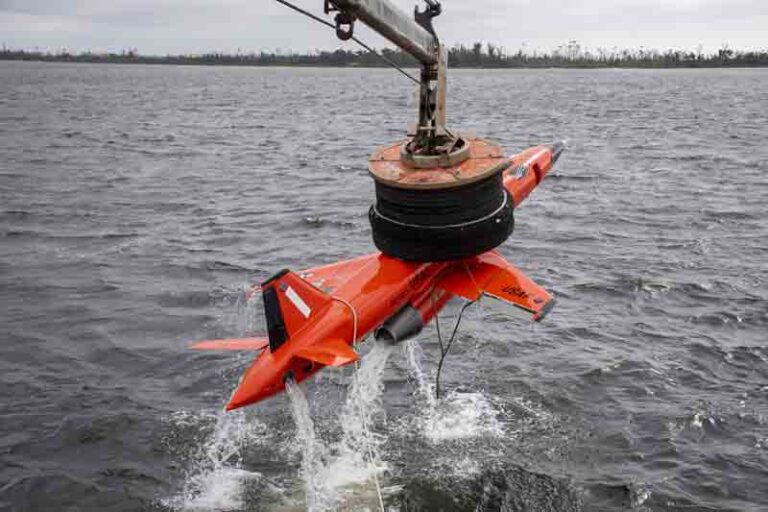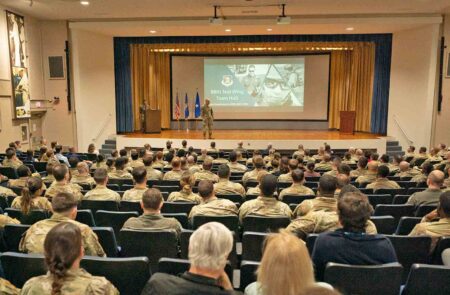EGLIN AIR FORCE BASE, Fla. — The 82nd Aerial Targets Squadron has a unique mission of providing aerial targets for testing Department of Defense and even foreign partners’ weapons systems.
Providing subscale and full-scale drones allow multiple DoD entities to employ live weapons, including pilots involved in the Weapons System Evaluation Program. These pilots get to experience combat maneuvers and firing live missiles at these targets, shooting them out of the sky over the Gulf.
But the mission doesn’t end when the target is shot out of the sky.
Part of the 82nd ATRS’s mission is to clear the waterborne corridor with U.S. Missile Retriever boats for target launch and recovery, as well as to remove drones and aircraft debris post-launch.
One of the common targets the 82nd ATRS employs and recovers is the BQM-167A, a high-performance, remotely controlled, subscale aerial target. This target is mainly used to support the 53rd Wing’s air-to-air Weapon System Evaluation Program.
At the cost of roughly $970K per drone, the BQM-167A can carry a variety of equipment such as infrared and radar pods, electronic attack pods, and chaff-and-flare dispenser sets. After completing its mission, drone regeneration maintenance occurs to prepare the target for its next mission.
“As you can imagine, by recovering these expensive targets and the pods they carry, 82nd Watercraft have a very high return on investment for our operation and ultimately the American taxpayer,” said Lt. Col. Dave Magnuson, 82nd ATRS commander.
SEE RELATED STORY: 82nd Aerial Targets Squadron modernizes missile retriever boats
“Additionally, at 120 feet long and 110 tons, they are fairly imposing vessels which helps them clear near-shore vessels from target launch and recovery corridors, ensuring the safety of civilian maritime traffic.”
Averaging 14 target recoveries per year, the squadron provides all U.S. Air Force aerial target support for the Department of Defense and international partners in the Eglin Gulf Test and Training Range.
“Our vessels depart the docks three hours prior to drone launch,” said Kevin Brackin, 82nd ATRS subscale aerial targets program analyst.
“The drones have a locater beacon which is activated when the drone lands in the Gulf of Mexico. By using the Retriever Radio Directional Finder aboard the vessel, crews are able to follow the direction of the signal inside the drone.”
The main difficulties the crews encounter are strong winds and Gulf Stream currents, making nighttime recoveries especially dangerous with the severe marine weather events, like squalls, high sea states, dense fog and lightning.
Another concern is marine life; jellyfish and sharks are the most common dangers to divers.
Despite the obstacles, 202 subscale aerial targets have been recovered during the life span of the drone which reached initial operational capability in 2008, which is a testament to the crews’ ability to navigate the waters.
“This crew really exemplifies the “Excellence In All We Do” [core value],” said Magnuson.
“Their professionalism and success rate speak to their commitment to the mission.”
By 1st Lt Lindsey Heflin, 53rd Wing






